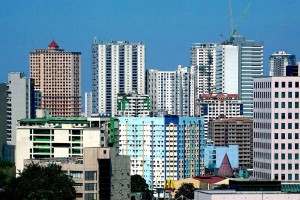The Philippine economy is forecast to grow at above 6% in 2024 and 2025, making it one of the fastest growing economies in the region.
In his economic and market outlook released on Tuesday, BPI senior vice president and lead economist Emilio Neri Jr. said Philippine economic growth in terms of gross domestic product (GDP) will likely hit 6.1% this year and further increase to 6.3% in 2025.
Also, the International Monetary Fund (IMF) sees the Philippine economy expanding by 6.3% percent in 2029, making the country one of the fastest growing economies in emerging and developing Asia.
As for inflation, Neri expects this to ease to 3.2% this year and further decelerate to 2.8 percent in 2025. The government has set an inflation target of 2% to 4% this year.
“The Philippine economy has been resilient despite significant headwinds like severe El Niño and devastating typhoons, still managing to grow by 6% in the first half of 2024,” the BPI official said.
“Looking ahead, the Philippine economy will likely continue to outperform in the region, supported by its strong consumer base,” he added.
For inflation, Neri sees this becoming manageable in 2024 as food supply and rice prices will stabilize.
“With El Niño now behind us and the potential increase in production, along with tariff reductions, rice may become more affordable,” he said.
Neri added that lower inflation may help boost consumption in the coming year, while more economic activity can be spurred by election-related spending.
IMF OUTLOOK
For its part, the IMF said in its World Economic Outlook October 2024 update that the Philippine economy could grow by 6.3% percent in 2029.
This will make the Philippines one of the fastest growing economies in emerging and developing Asia.
IMF’s projected economic expansion for the Philippines is the third highest in Asia, or next to growth forecast for Bhutan at 7.2%, and Bangladesh and India at 6.5%.
For 2024 and 2025, the IMF maintained its Philippine economic growth projection at 5.8% and 6.1%, respectively.
“Consumption growth will be buoyed by lower food prices and the upcoming midterm elections, while investment growth is expected to pick up on the back of a sustained public investment push, and gradually declining borrowing costs,” the IMF said.
Meanwhile, Philippine GDP growth over the medium term was pegged by the IMF at 6.3%, to be supported by investment that will be fueled by public-private partnership projects and foreign direct investments.
(PHOTO FROM PNA)

